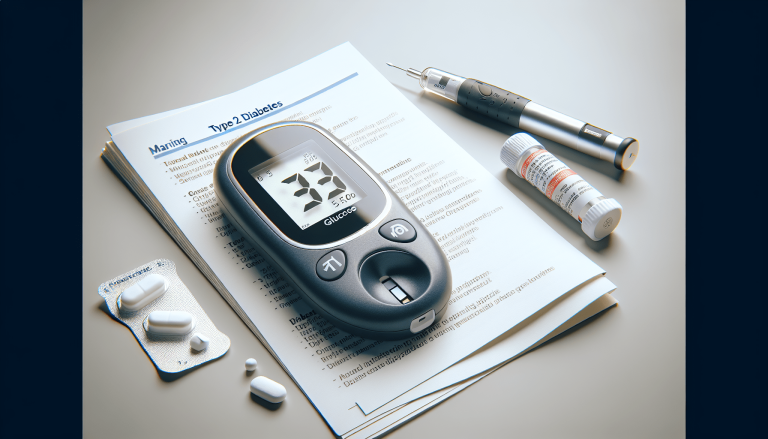What Is The Most Accurate Test For Prostate Cancer?
Prostate cancer is a prevailing concern among men, and finding the most accurate test to detect it is crucial for early diagnosis and effective treatment. In the quest for answers, medical professionals and researchers have explored various options. From the traditional prostate-specific antigen (PSA) test to more advanced screenings like MRI and genomic tests, the search continues to find the method that provides the highest level of accuracy. In this article, we will explore the different tests available, their pros and cons, and ultimately, shed light on what could be the most accurate test for prostate cancer.
Digital Rectal Exam (DRE)
Overview
The Digital Rectal Exam (DRE) is a common test used to screen for prostate cancer. It involves a healthcare provider inserting a gloved, lubricated finger into your rectum to feel the prostate gland and check for any abnormalities. The DRE is a quick and relatively simple procedure that can provide valuable information about the size, shape, and texture of the prostate.
Procedure
During the DRE, you will be asked to lie on your side or bend over a table or examination bed. The healthcare provider will then insert their finger into your rectum and feel the prostate gland. This may cause some discomfort but should not be excessively painful. The provider will assess the size, shape, and texture of the prostate and check for any lumps, bumps, or other abnormalities.
Accuracy
While the DRE is a valuable tool in detecting prostate cancer, it is not a definitive diagnostic test. Its accuracy in detecting prostate cancer is relatively low, typically ranging from 40% to 60%. However, the DRE can provide important clinical information, especially when combined with other tests such as the Prostate-Specific Antigen (PSA) test or a prostate biopsy.
Prostate-Specific Antigen (PSA) Test
Overview
The Prostate-Specific Antigen (PSA) test measures the levels of a protein called PSA in the blood. Elevated levels of PSA can indicate the presence of prostate cancer, although other conditions such as an enlarged prostate or prostate infection can also cause elevated PSA levels. The PSA test is a widely used screening tool for prostate cancer.
Procedure
The PSA test involves a simple blood draw. A healthcare professional will take a small sample of your blood, usually from a vein in your arm. The blood sample is then sent to a laboratory for analysis, where the PSA levels are measured.
Accuracy
The PSA test has been widely used for prostate cancer screening, but its accuracy has been a subject of debate. While it can detect elevated PSA levels, which may indicate the presence of prostate cancer, it is not specific to prostate cancer alone. Other conditions can also cause elevated PSA levels, leading to false-positive results. The accuracy of the PSA test varies depending on the cutoff level used, but it generally ranges from 20% to 50%.
Limitations
One of the main limitations of the PSA test is its inability to distinguish between aggressive and non-aggressive prostate cancers. Elevated PSA levels can occur in both types of cancers, making it difficult to determine the appropriate course of action. Additionally, the PSA test can result in false-positive or false-negative results, leading to unnecessary anxiety or missed diagnoses.

Prostate Health Index (PHI)
Overview
The Prostate Health Index (PHI) is a newer test that combines the levels of three different prostate-specific antigens, including total PSA, free PSA, and proPSA. By incorporating these different PSA forms, the PHI test aims to improve the accuracy and specificity of prostate cancer detection.
Procedure
Similar to the PSA test, the PHI test involves a blood draw. A sample of your blood will be taken and analyzed for the levels of total PSA, free PSA, and proPSA. These values are then combined using a mathematical formula to calculate the PHI score.
Accuracy
The PHI test has shown promising results in improving the accuracy of prostate cancer detection compared to the traditional PSA test. Studies have demonstrated that the PHI test can provide a more reliable indicator of the likelihood of prostate cancer, reducing unnecessary biopsies and improving the detection of clinically significant cancer.
Advantages
One of the main advantages of the PHI test is its ability to provide a more specific assessment of prostate cancer risk. By incorporating multiple PSA forms, the PHI test can better differentiate between aggressive and non-aggressive cancers, helping guide treatment decisions.
Limitations
Despite its advantages, the PHI test is not without limitations. It may still result in false-positive or false-negative results, although the risk is reduced compared to the traditional PSA test. Additionally, the cost of the PHI test may be higher compared to other screening methods, and it may not be widely available in all healthcare settings.
4Kscore Test
Overview
The 4Kscore Test is another innovative test that aims to improve the accuracy of prostate cancer detection. It assesses the levels of four different prostate-specific kallikreins, which are proteins produced by the prostate gland. By combining these biomarkers, the 4Kscore Test provides a personalized risk score for prostate cancer.
Procedure
Similar to the PSA and PHI tests, the 4Kscore Test requires a blood sample. The blood is analyzed for the levels of four different kallikreins: total PSA, intact PSA, free PSA, and human kallikrein 2 (hK2). These biomarkers are then used to calculate the 4Kscore, which indicates the risk of prostate cancer.
Accuracy
The 4Kscore Test has shown promising results in improving the accuracy of prostate cancer detection. Studies have demonstrated that it can better differentiate between aggressive and non-aggressive cancers, reducing unnecessary biopsies and identifying clinically significant cancer.
Advantages
One of the key advantages of the 4Kscore Test is its ability to provide a personalized risk score, taking into account multiple biomarkers. This can help guide treatment decisions and potentially reduce overtreatment of low-risk cancers. Additionally, the 4Kscore Test has shown to have a higher specificity compared to the traditional PSA test.
Limitations
Despite its advantages, the 4Kscore Test is not widely available and may be more costly than other screening methods. False-positive and false-negative results can still occur, although the risk is reduced compared to the traditional PSA test. It is important to discuss the pros and cons of the 4Kscore Test with your healthcare provider to determine if it is the right choice for you.

Prostate MRI
Overview
Prostate MRI (Magnetic Resonance Imaging) is an advanced imaging technique that can provide detailed images of the prostate gland. It utilizes powerful magnets and radio waves to generate high-resolution images, allowing for the visualization of any abnormalities.
Procedure
During a prostate MRI, you will lie on a table that slides into a tunnel-like machine. You may be given a contrast dye intravenously to enhance the visibility of certain structures. The MRI machine will then create a series of images, which will be interpreted by a radiologist.
Accuracy
Prostate MRI has shown promising accuracy in detecting prostate cancer, particularly for identifying clinically significant tumors. By visualizing the prostate gland and surrounding tissues, MRI can help localize suspicious areas and guide further diagnostic or treatment interventions.
Advantages
One of the main advantages of prostate MRI is its ability to provide detailed images of the prostate gland. This can help identify potential tumors and guide the decision-making process regarding further testing or treatment. Additionally, MRI can help determine the stage and extent of prostate cancer, aiding in treatment planning.
Limitations
Despite its advantages, prostate MRI is not without limitations. It may still result in false-positive or false-negative results, particularly for smaller or less aggressive tumors. Prostate MRI can also be more expensive and time-consuming compared to other screening methods. Additionally, not all healthcare facilities may have access to advanced MRI technology or expertise in interpreting prostate MRI images.
Prostate Biopsy
Overview
A prostate biopsy is a procedure in which small samples of prostate tissue are collected and examined for the presence of cancer cells. It is considered the gold standard for diagnosing prostate cancer, as it provides a definitive confirmation of the disease.

Procedure
During a prostate biopsy, a healthcare provider will insert a thin needle into the prostate gland through the rectum or perineum (the area between the scrotum and anus) to collect tissue samples. Local anesthesia may be used to minimize discomfort during the procedure. The samples are then sent to a laboratory for analysis.
Accuracy
Prostate biopsy is considered highly accurate in diagnosing prostate cancer. By examining the collected tissue samples, pathologists can determine the presence and aggressiveness of cancer cells, guiding treatment decisions. However, it is important to note that a biopsy is not without risks, such as infection, bleeding, or discomfort.
Advantages
The main advantage of a prostate biopsy is its ability to provide a definitive diagnosis of prostate cancer. It allows for the assessment of cancer grade, stage, and aggressiveness, which are important factors in determining the appropriate treatment approach. A biopsy can also help rule out prostate cancer if the results are negative.
Limitations
Despite its accuracy, a prostate biopsy is an invasive procedure and carries certain risks. These risks include infection, bleeding, pain, and discomfort. Additionally, a biopsy may not always detect small or low-grade tumors, leading to potential false-negative results. It is important to discuss the risks and benefits of a prostate biopsy with your healthcare provider before undergoing the procedure.
PCA3 Test
Overview
The PCA3 (Prostate Cancer Antigen 3) test is a urine test that measures the levels of the PCA3 gene, which is overexpressed in prostate cancer cells. By assessing the levels of PCA3 RNA in the urine, the PCA3 test aims to improve the accuracy of prostate cancer detection.
Procedure
To perform a PCA3 test, you will be asked to provide a urine sample. The sample is then sent to a laboratory, where the levels of PCA3 RNA are measured using specialized techniques.
Accuracy
The PCA3 test has shown promising results in improving the accuracy of prostate cancer detection, particularly for detecting aggressive tumors. Studies have demonstrated that the PCA3 test can help differentiate between prostate cancer and other benign conditions, reducing unnecessary biopsies and improving the identification of clinically significant cancer.
Limitations
One of the limitations of the PCA3 test is its inability to provide a definitive diagnosis of prostate cancer. Elevated PCA3 levels can indicate the presence of cancer, but further testing, such as a prostate biopsy, is still necessary to confirm the diagnosis. Additionally, false-positive or false-negative results can still occur, although the risk is reduced compared to the traditional PSA test.
Transrectal Ultrasonography (TRUS)
Overview
Transrectal Ultrasonography (TRUS) is a procedure in which high-frequency sound waves are used to create images of the prostate gland. It can help assess the size, shape, and structure of the prostate and identify any abnormalities or suspicious areas.
Procedure
During a TRUS, a healthcare provider will insert a small ultrasound probe into your rectum. The probe emits sound waves that bounce off the prostate gland, creating real-time images on a monitor. The procedure is relatively quick and usually does not cause significant discomfort.

Accuracy
TRUS can provide valuable information about the size, shape, and structure of the prostate gland. It can help identify any abnormalities or suspicious areas that may require further investigation. However, TRUS alone is not sufficient to diagnose prostate cancer, and additional testing, such as a biopsy, may be required.
Advantages
One of the main advantages of TRUS is its ability to provide real-time images of the prostate gland. This can help guide the decision-making process regarding further testing, such as a biopsy. TRUS is also a relatively safe and non-invasive procedure.
Limitations
While TRUS can provide valuable information about the prostate gland, it has limitations in detecting small or less aggressive tumors. It may also result in false-positive or false-negative results, requiring further testing for a definitive diagnosis. Additionally, TRUS may not be widely available in all healthcare settings.
MRI-TRUS Fusion Biopsy
Overview
MRI-TRUS Fusion Biopsy is an advanced technique that combines magnetic resonance imaging (MRI) with transrectal ultrasonography (TRUS) to guide prostate biopsies. By fusing the images from both modalities, this approach enhances the accuracy and targeting of biopsy samples, particularly for suspicious areas identified on MRI.
Procedure
During an MRI-TRUS Fusion Biopsy, the patient first undergoes an MRI scan of the prostate gland. This is followed by a transrectal ultrasound (TRUS) procedure, during which the ultrasound images are fused with the previously obtained MRI images. This fusion allows for more precise targeting of suspicious areas for biopsy sample collection.
Accuracy
MRI-TRUS Fusion Biopsy has shown improved accuracy in the detection of prostate cancer compared to traditional blind biopsies. By targeting specific suspicious areas identified on MRI, this technique increases the likelihood of detecting clinically significant cancers while minimizing the risk of missing smaller or less aggressive tumors.
Advantages
One of the main advantages of MRI-TRUS Fusion Biopsy is its ability to provide more accurate targeting of biopsy samples. By combining the information from MRI and TRUS, this technique can better localize suspicious areas, reducing the risk of unnecessary biopsies and improving the detection of clinically significant tumors.
Limitations
Despite its advantages, MRI-TRUS Fusion Biopsy may not be widely available in all healthcare settings. The procedure itself can be more complex and time-consuming compared to traditional biopsies. Additionally, false-positive or false-negative results can still occur, and further testing may be required to confirm the diagnosis.
SelectMDx
Overview
SelectMDx is a non-invasive urine test that assesses the levels of genetic markers associated with prostate cancer. It aims to stratify patients into high or low-risk groups for clinically significant prostate cancer, helping guide further diagnostic or treatment decisions.
Procedure
To perform the SelectMDx test, a urine sample is collected and sent to a laboratory for analysis. The sample is analyzed for the presence of specific genetic biomarkers associated with prostate cancer. The results are then reported as a probability score, indicating the likelihood of clinically significant prostate cancer.
Accuracy
The SelectMDx test has shown promising accuracy in stratifying patients based on their risk of clinically significant prostate cancer. By incorporating genetic biomarkers, this test can help identify those who may benefit from additional testing, such as a prostate biopsy, while reducing unnecessary procedures for low-risk individuals.
Advantages
One of the main advantages of the SelectMDx test is its non-invasive nature. It eliminates the need for a rectal examination or tissue biopsy, reducing discomfort and potential complications. Additionally, the test can provide valuable information to assist in the decision-making process regarding further diagnostic or treatment interventions.
Limitations
Although the SelectMDx test has shown promising accuracy, it is not a definitive diagnostic test for prostate cancer. Further testing, such as a prostate biopsy, may still be required to confirm the diagnosis. Additionally, false-positive or false-negative results can still occur, emphasizing the importance of individualized patient assessment and discussion with a healthcare provider.
Additional Resources

This is the story of how one man’s bladder exploded due to his BPH…
He spent 3 days in the ICU thinking how merciless this condition is, despite everything he did to get his prostate fixed…
This moment showed him that if he wanted to live and pee normally again, he would have to do it on his own, and not rely on modern medicine…
I want to share it with you, I want to finally show you what you always desired but never dared to hope for… The resolution that makes your prostate return to its normal size, canceling all of those awful symptoms…
All men have to see this right now, because this information will change the course of their entire lives…
And it’s entirely scientific proven!
For complete details, click this link: https://bit.ly/Natural-Prostate-Treatment







